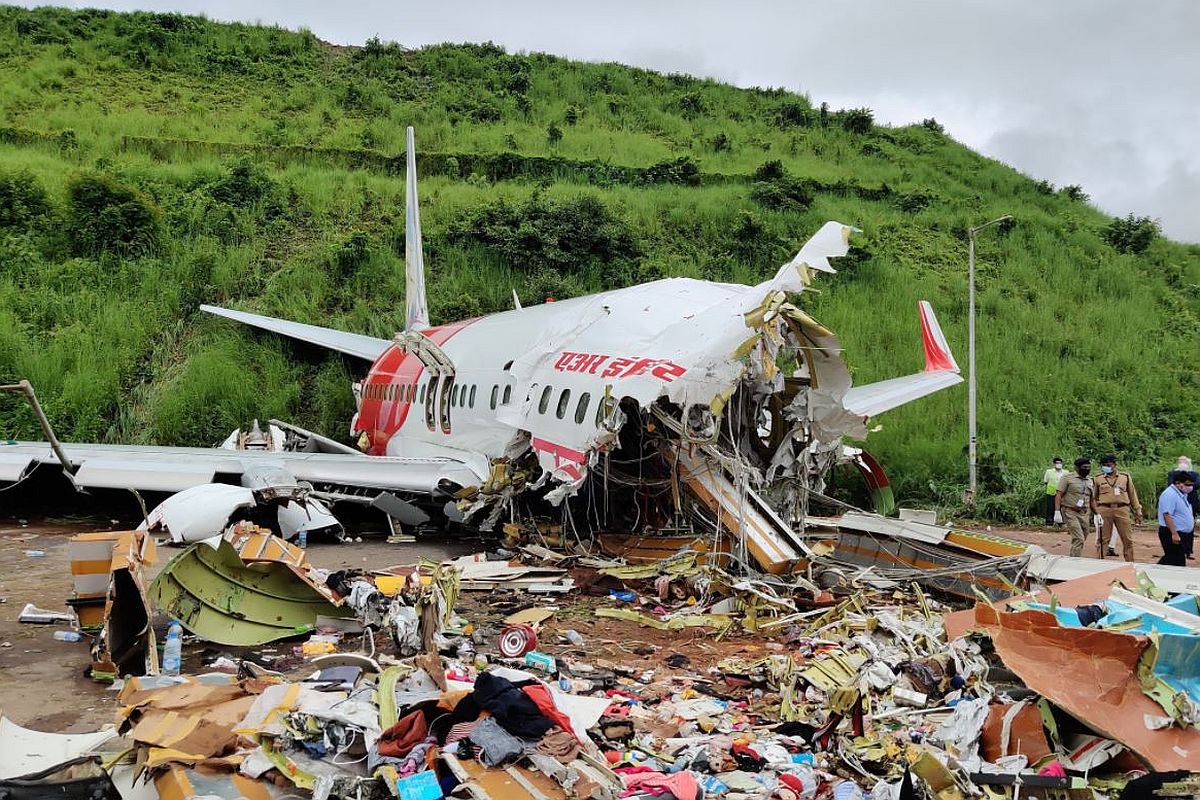DGCA lifts SpiceJet off surveillance list over improved financial posture
The airline had been under additional scrutiny due to financial issues and flight cancellations.
Major pilot associations have demanded that Arun Kumar be immediately replaced with a suitable candidate with substantial aviation knowledge and operational experience, to serve the country as the Director General of Civil Aviation.

Crashed Air India Express flight near Kozhikode airport. (Photo: Twitter | @HardeepSPuri)
Major pilot associations have sought an immediate replacement of incumbent Director General of Civil Aviation (DGCA) Arun Kumar in the interest of flight safety following the Kozhikode air mishap.
They have demanded that Arun Kumar be immediately replaced with a suitable candidate with substantial aviation knowledge and operational experience, to serve the country as the Director General of Civil Aviation.
In a letter to Union Civil Aviation Minister Hardeep Puri, Indian Commercial Pilots Association (ICPA) and Indian Pilots Guild (IPG) pointed out that Arun Kumar, in a nationally televised interview conducted moments after the catastrophic accident of Air India Express Flight No IX 1344 at Kozhikode, referred to the deceased pilots as “fellows” and also said, “…and the landing it seems was not appropriate…”
Advertisement
“Not only was the reference to the deceased individuals by such a senior officer of the government of India as ‘fellows’ highly inappropriate and distasteful but completely in violation of international norms and protocols that are required to be followed by regulatory agencies”, the pilot bodies said.
In another interview, “The landing was not smooth” were his remarks, pilots say and added that these remarks only reveal his total lack of technical knowledge and amateurish view of the unfortunate accident. It is an established scientific fact that so called “smooth” touchdowns may be counterproductive in certain adverse weather conditions and may pose a significant risk to safety, they said.
Whether a landing technique is appropriate or a contributory factor to a mishap can only be ascertained after a thorough, evidence-backed investigation and not by speculative and casual remarks, they added.
“As you may be aware, ‘Annex 13 to the Convention on International Civil Aviation’ of which India is a signatory, is the binding document to be followed during an accident investigation and it states that the sole objective of the investigation of an accident shall be the prevention of accidents and incidents and the purpose is not to apportion blame or liability”, they added.
The associations said the DGCA’s comments have “made us the laughing stock of the aviation world”. “The DGCA’s hasty comments on TV clearly appeared to be biased, unprofessional, premature and presumptive – without even considering the need to conclude any technical analysis of the Digital Flight Data Recorder (DFDR), Cockpit Voice Recorder (CVR) and other verifiable sources — and have tragically made us the laughing stock of the aviation world”, the pilots said.
“Just as the Head of the Atomic Energy Regulatory Board cannot be a veterinary scientist and nor can the head of Medical Council of India be a mathematician – no matter how academically qualified or senior that person may be – every technically sensitive department with public safety ramifications requires a domain expert . The DGCA of India, therefore, stands out as an aberration and embarrassment before the international aviation community”, they added.
The pilots allege that the DGCA is trying to sway public opinion. “It is shocking that the very person in our country who is entrusted with the job of ensuring that all agencies in the country act professionally and adhere to International Treaties, Regulations and Conventions on Civil Aviation such as Annex 13, has violated the very basic principle of accident investigation. By his irresponsible remarks it is obvious that he is trying to sway public opinion, as well as the outcome of the investigation towards a direction that suits his office”, they said.
Blaming the DGCA they said that air accidents never occur because of one single cause or factor. They are always the unfortunate byproduct of systemic failures such as poor infrastructure, inadequate regulatory oversight and often, willful negligence.
In the early days of civil aviation in India, the Directorate General of Civil Aviation was headed only by aviation professionals with operational experience. It is only in the recent past that the post has been occupied by bureaucrats and the results are there for all to see, the pilots said.
“We have even suffered the ignominy of being downgraded by the Federal Aviation Administration (FAA), USA and almost become a pariah before the international aviation community”, the pilots said.
ICPA and IPG have pointed to the history of the Federal Aviation Administration of the USA, which is considered to be the leader and pioneer in the field of aviation regulatory oversight. “You will realise that in its history, of all 19 administrators or heads of the organization, 14 were highly experienced pilots and the other 5 who were not pilots still had significant aviation experience”, they added.
The Dubai-Kozhikode Air India Express flight (IX-1344), which was part of the Vande Bharat mission, with 190 people on board, overshoot the runway amid heavy rain, plunged deep down 35 ft. into the valley below and broke in two pieces while landing at Karipur International Airport in Kerala’s Kozhikode district on August 7. Eighteen people including two pilots died in the plane crash.
However, the flight did not catch fire and thus a greater disaster was averted.
The Directorate General of Civil Aviation (DGCA) has ordered a detailed inquiry into the incident.
In a statement after the tragic incident, the DGCA had said that the Air India Express flight landed on Runway 10 amid visibility of 2,000 metres in heavy rain, but continued running till the end of runway, fell down the valley and broke into two pieces.
(With inputs from IANS)
Advertisement